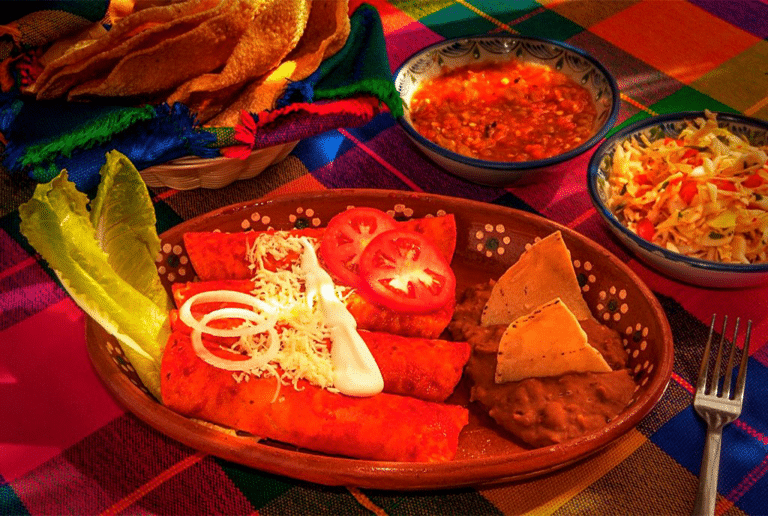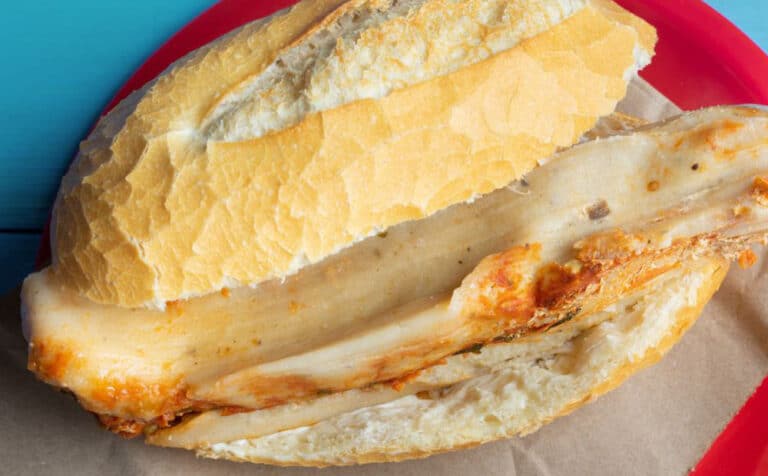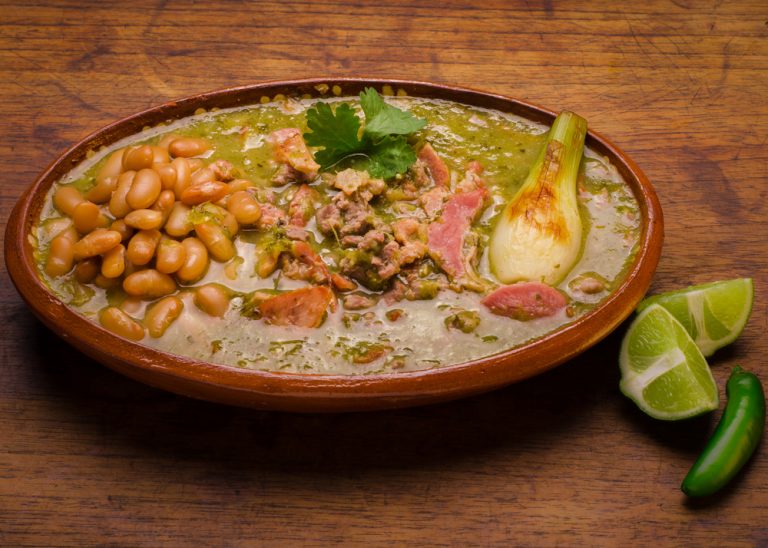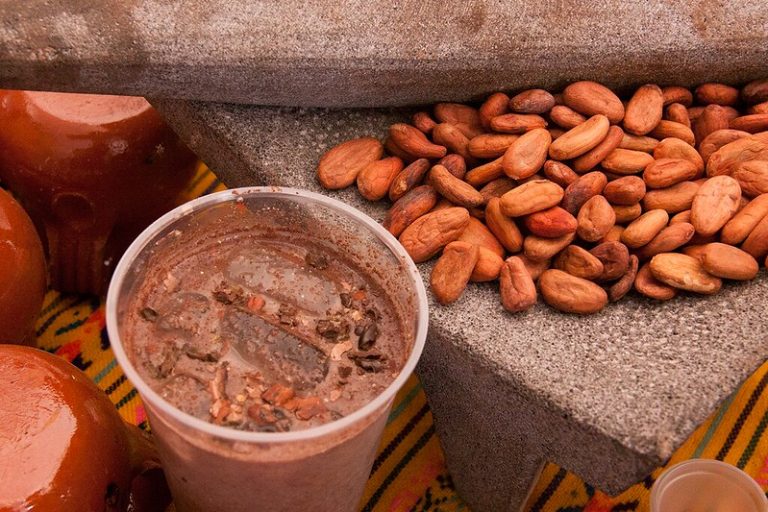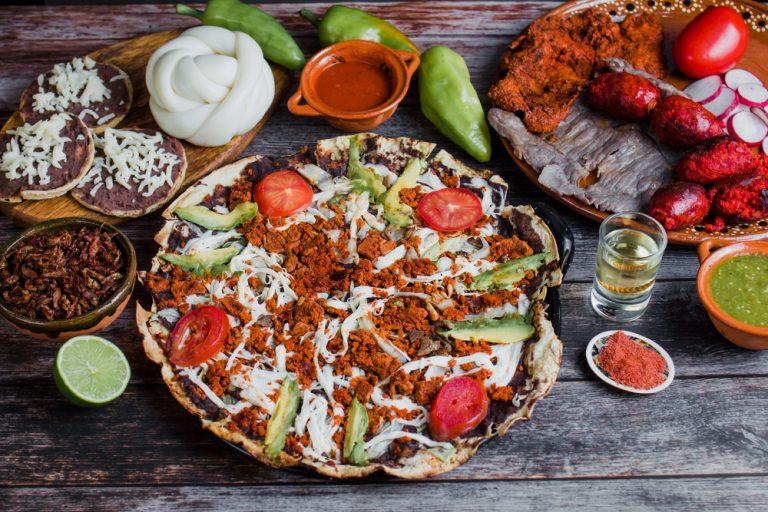Savoring the Art of Pechuga Mezcal: A Journey Through Its Making
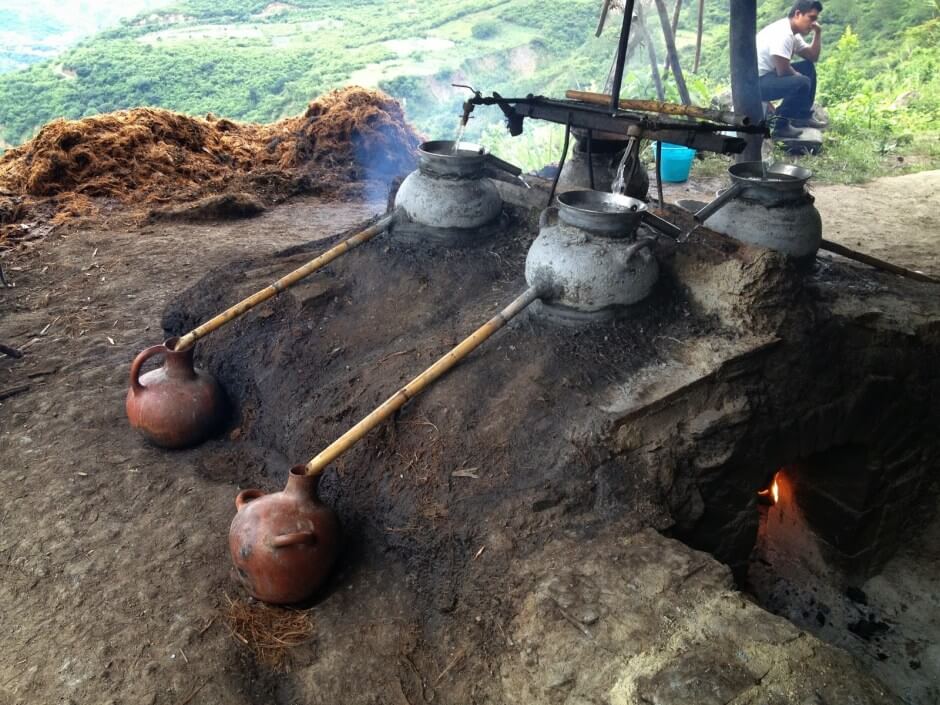
Savoring the Art of Pechuga Mezcal: A Journey Through Its Making
Pechuga Mezcal is a unique and highly regarded type of mezcal that embodies the art and tradition of Mexican distillation.
This unique spirit is known for its distinctive flavor profile and the intricate process of its elaboration, which involves a blend of various ingredients, including wild fruits, spices, and most notably, a chicken or turkey breast.
In this post, I will show you the art behind the elaboration of Pechuga Mezcal, its history and cultural significance, and how it differs from other types of mezcal.
Get ready to discover the secrets and complexities that make Pechuga Mezcal a true masterpiece of Mexican spirits.
So what exactly is Pechuga Mezcal?
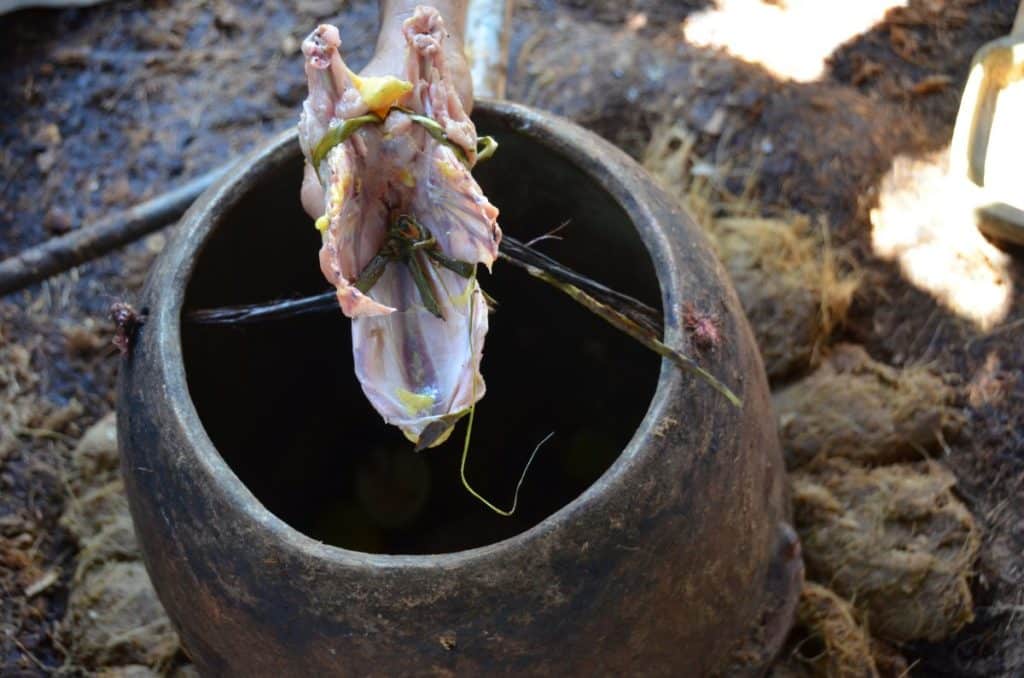
The term usually grabs attention (because pechuga means “breast”), and many people may wonder:
What is pechuga mezcal? Does it have an animal breast, or is it the name of a large and fleshy maguey stalk, similar to the breast of a bird?
Again, “Mezcal de pechuga” is a special preparation of this Mexican distillate that involves a chicken or turkey breast in the distillation process.
The batches of mezcal de pechuga are small, usually based on a family recipe of the “Maestro Mezcalero” (who is responsible for the entire elaboration process), who knows perfectly the exact amount and type of herbs, fruits, grains, and nuts that can accompany the breast of a raw turkey.
It is called mezcal de pechuga (breast mezcal) because the breast is introduced into the still for the second or third distillation.
And it is the vapors that emanate from these subsequent distillations that add all the flavors that can be distinguished from the first sip of a mezcal de pechuga.
You may want to read: Tequila vs Mezcal: A Complete Guide to Agave Spirits
However, the elaboration of a mezcal de pechuga is not as old as the drink’s history, which we know has been prepared since pre-Hispanic times.
The magic of the Maestro Mezcalero
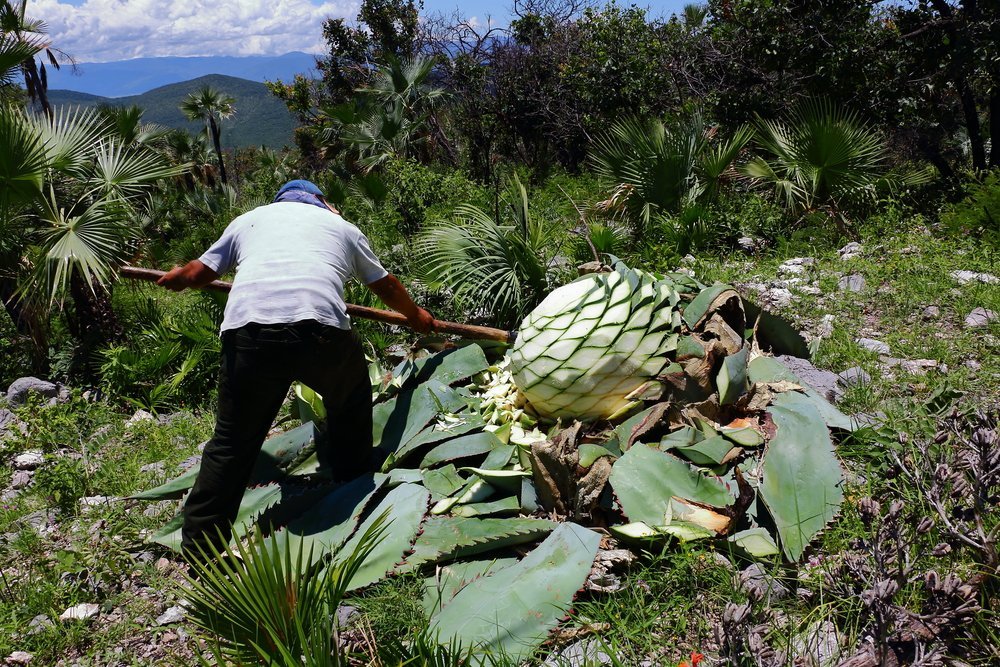
Many anecdotes and experiences of the old mezcal masters refer to creating a type of mezcal that incorporates the breasts of various birds.
Keep in mind that the distillation of mezcal is handmade and organic.
It is produced in small towns with recipes and processes passed down from generation to generation.
It is also common to find the presence of other proteins such as rabbit leg, deer meat as well as fruits, herbs, and spices.
In other words, there are many types of mezcal de pechuga, and each one carries the seal, knowledge, and legacy of each mezcal master.
In Oaxaca, using an animal to prepare mezcal implies an extra cost, an added value, because animals for human consumption are scarce.
Therefore, mezcal de pechuga has been reserved for ceremonies of patronage saint festivals, the day of the dead, and other special celebrations.
How is Pechuga Mezcal made?
The mezcal process has gained tremendous importance.
Today, it is highly coveted because of its manufacturing techniques that involve artisan and organic methods, two aspects that are in great demand among national and foreign consumers.
You may want to read: How to Drink Mezcal Like a Pro: Tips and Guide
In addition to the above, it is essential to emphasize that only master mezcal makers are authorized to make mezcal.
The entire process is certified by the Mexican Mezcal Quality Regulatory Council, which verifies not only the quality of the maguey and the region in which it was produced but also the technique used.
A mezcal de pechuga is made as follows:
1. Maguey selection
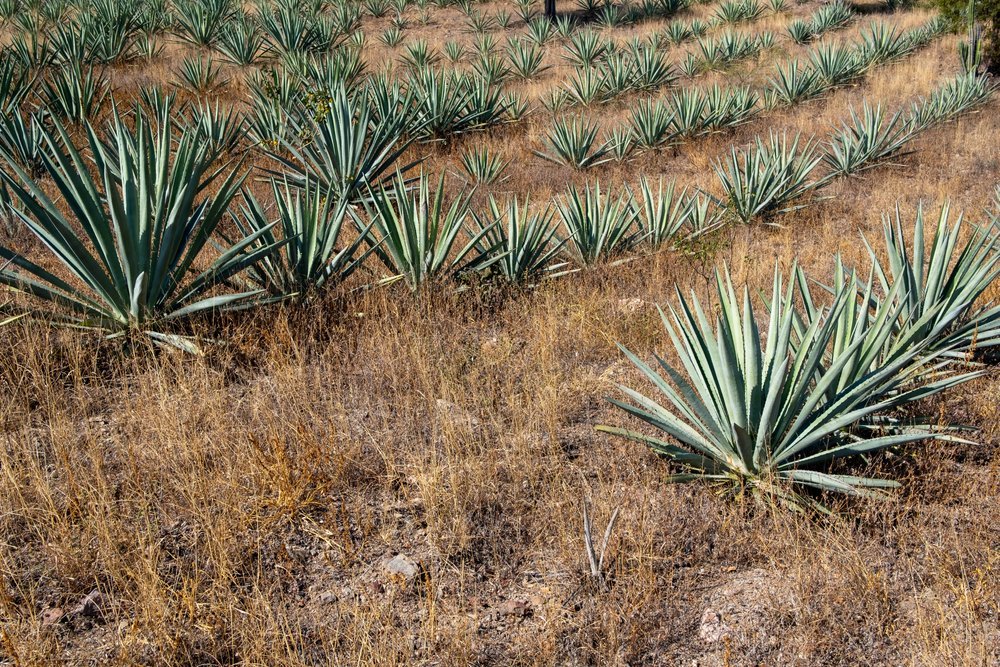
Espadín, arroqueño and tobalá are three of the agave varieties most commonly used in mezcal production.
The tobalá is a wild agave that grows in the fields; hence its production is very common.
However, for pechuga mezcal, the espadín is widely used because it is abundant, is larger in size, matures quickly (it takes about seven years), and obviously produces more liters of mezcal.
The maturation of the espadín maguey is a determining factor because a maguey plant takes up to ten years to be ready to be used in the preparation of a good mezcal.
Another of its advantages is that its flavor is much more balanced and allows a perfect combination with that of the breast.
So for the production of a pechuga mezcal, it is reasonable for a master to opt for faster-maturing maguey and not contemplate a variety such as “tepeztate,” which has smokier and earthier flavors, because they would be lost during the third distillation when the pechuga is introduced into the still.
2. Agave cooking and pressing
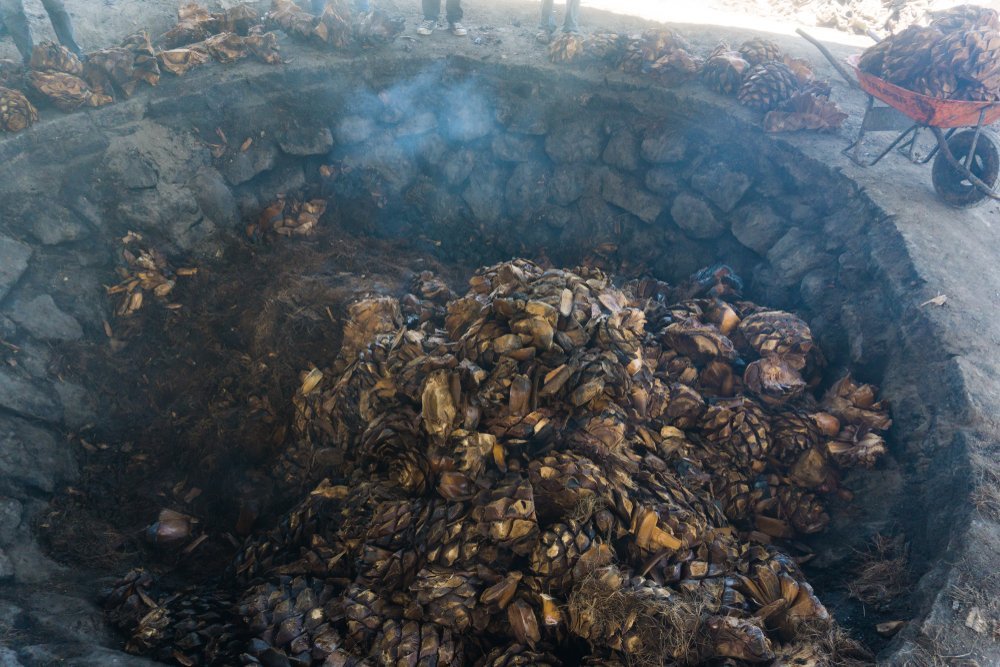
The maestro mezcalero is the one who selects the maguey; he will separate the pineapple from the stems, leaves, and roots.
It is called “pineapple” because the heart of the maguey has a shape very similar to that of the fruit, where the distillate is obtained.
The pineapples are cooked in ovens that use pre-heated stones and must be red hot.
Then, they’re covered with bagasse and earth for perfect cooking and also for it to take the characteristic flavors of mezcal. It is cooked for three days.
You may want to read: 7 Best Mezcal Cocktails Easy to Make, and Delicious
All mezcal manufacturers have a mill in which they crush the pineapple. The bagasse from this milling is left to settle in large vats or pots for fermentation.
Many are made of clay to impregnate the liquid with a unique, earthy flavor. Once the liquid is ready, it is stored in stills.
3. Fermentation and first distillations
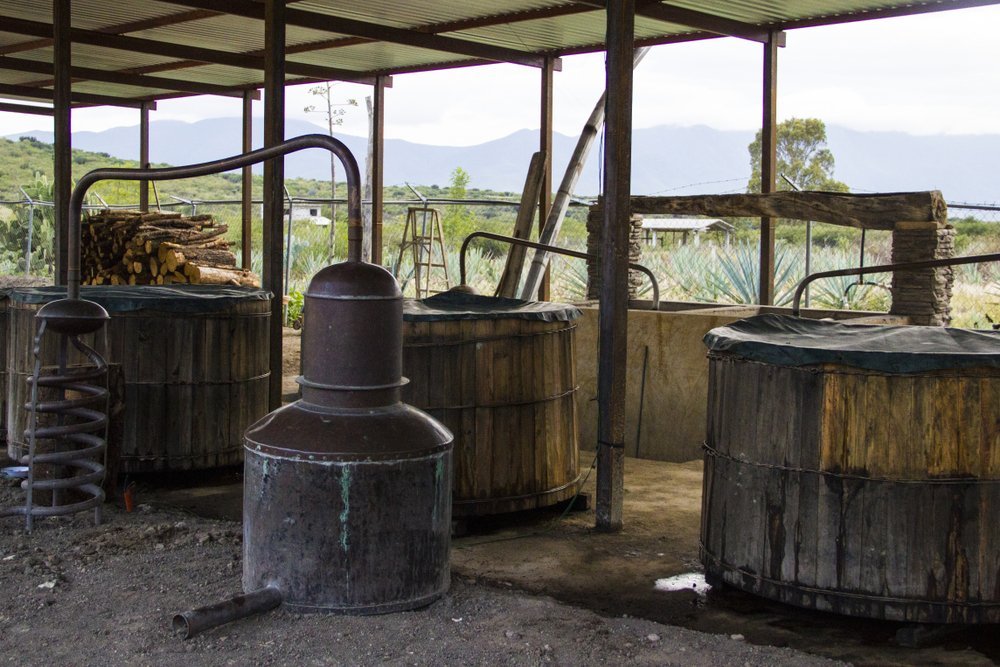
For the fermentation process, oak vats are used.
The maestro mezcalero is the expert who knows the right amount of cold and hot water to increase the microorganisms in a natural fermentation process that takes between three and five days.
During this time, earth, wood, and smoke flavors are reinforced. Once the musts are cooked, they are transferred to stills for the first distillation.
The mezcal process is entirely artisan, so it will be common to see equipment made of clay, reed, and possibly copper in many distilleries.
During the first distillation, a mezcal of about 50° alcohol or even higher is obtained, called mezcal de punta. In a second distillation, a higher-quality product is received.
4. Third distillation
For mezcal de pechuga, the master mezcalero performs a third and final distillation so that the steam from the boiling liquid melts with the chicken or turkey breast that is hung inside the still.
The breast must be clean, blood-free, and hung with hemp rope inside the still.
Some mezcaleros add fruits during the first or second distillation and leave the pechuga until the third and final phase.
The most important thing to consider is that the result should be an amber-colored distillate, with hints of the fruits and a certain whiff of the added protein, but in no case is it a reposado or añejo mezcal.
How much does Pechuga Mezcal cost?
The price of Mezcal de Pechuga ranges from $700 to $2,600 pesos.
The demand for premium Mezcal de Pechuga is high in the United States.
Astor Wines in NY, the best wine and liquor store in the world, offers a Mezcal Real Minero Pechuga for USD 214.
As you may have noticed, the combinations and recipes are varied.
I highly recommend that the mezcal de pechuga be sipped neat so that you can appreciate the ingredients.
Furthermore, it makes a magnificent pairing with moles, tamales, barbacoa, and any food prepared for a religious celebration or major ceremony.
Mezcal pechuga is a type of distillate highly coveted for all the surprises it holds that a mezcal lover cannot miss.
It is a new world full of flavors, innovative palate experiences, and learning.
Over time, you will gradually distinguish and appreciate the different notes of chicken, fruits, and seeds.
Salud!

